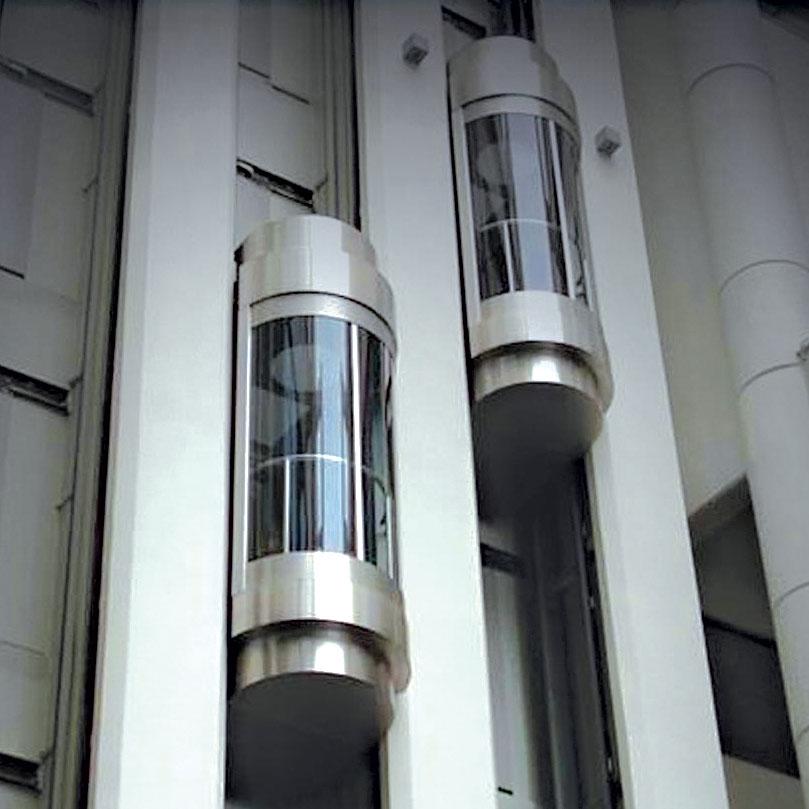London Lift Company: Relied On Experts for All Your Vertical Transportation Needs
London Lift Company: Relied On Experts for All Your Vertical Transportation Needs
Blog Article
Looking Into the Globe of Lifts: Common Issues Encountered by Different Lift Mechanisms
As we browse via the vertical transportation systems of modern buildings, lifts attract attention as an indispensable element of our lives. Nevertheless, behind their seamless procedure lies a world of intricate devices that can occasionally run into obstacles. From hydraulic elevators to grip systems and machine-room-less layouts, each lift type features its set of common concerns. Comprehending these difficulties is vital for ensuring the smooth performance of these essential systems. Allow's check out the complexities that underlie the procedure of elevators and the possible issues that can develop, shedding light on the intricate web of lift mechanisms.
Hydraulic Elevators
Hydraulic elevators, commonly liked for low-rise structures, use fluid stress to regulate the activity of the lift automobile (lift repair companies). This mechanism involves a hydraulic pump pushing oil into a cylinder, triggering the lift to relocate the preferred direction. While hydraulic lifts are understood for their smooth and peaceful operation, they do come with their very own collection of common issues
One widespread trouble with hydraulic lifts is oil leakage. Additionally, issues with the control system, such as defective valves or a malfunctioning pump, can create disturbances in the lift's movement.
Routine maintenance and prompt repairs are necessary to make sure the smooth performance of hydraulic lifts. By attending to these common issues proactively, building owners can reduce downtime and make sure the safety and effectiveness of their vertical transportation system.
Traction Lifts
When considering vertical transport systems in structures, an additional common type other than hydraulic lifts is the grip elevator. Traction lifts operate utilizing a system of ropes and counterweights that relocate the elevator automobile by clutching onto the hoist ropes. This system enables for smoother and much faster upright transport contrasted to hydraulic systems.
One of the common concerns encountered by traction lifts is rope wear. The consistent movement of the ropes within the traction system can result in wear and tear over time, possibly triggering the lift to malfunction or come to be harmful for use. Normal examinations and maintenance of the ropes are necessary to ensure the elevator's correct functioning and safety.
One more concern that traction lifts may encounter is connected to the control system. Issues with the control system can result in concerns such as irregular motion, delays in response times, or perhaps complete closures. Routine testing and maintenance of the control system are crucial to avoid such problems and make sure the elevator's integrity.
Machine-Room-Less (MRL) Elevators

Among the essential elements of MRL elevators is the small gearless grip machine that is installed within the hoistway. This maker successfully drives the elevator auto without the need for cumbersome tools located in typical grip elevators. In addition, MRL lifts typically make use of a weight system to balance the cars and truck, more boosting their power efficiency.
Regardless of their advantages, MRL elevators might encounter difficulties associated with repair and maintenance due to the restricted area for devices installation. Accessibility for servicing components within the shaft can be restricted, calling for specialized lift companies in London training for service technicians. Correct maintenance timetables and routine inspections are crucial to make certain the continued smooth operation of MRL elevators.
Overloading and Weight Limitation Issues
Straining and weight restriction issues are essential problems in lift procedures. Lift suppliers layout raises with details weight capacities to make certain passenger safety and tools durability.
When elevators are strained, it puts excessive pressure on the electric motor, cords, and other parts, possibly creating breakdowns or malfunctions. Safety and security devices such as sensing units and overload sensors remain in place to stop lifts from relocating if they discover excess weight. In addition, exceeding weight limitations can cause boosted power consumption and deterioration on the lift system.
To reduce overloading concerns, building supervisors need to prominently display weight limits in lifts and educate passengers on the value of sticking to these constraints - lift repair companies. Routine upkeep checks by certified technicians can also assist make sure that elevators are running within risk-free weight specifications. By addressing overloading and weight limitation problems proactively, structure proprietors can improve lift security and efficiency
Electrical System Failings
Going beyond weight limits in elevators can not only bring about mechanical issues however likewise possibly add to electrical system failures within the lift framework. Electrical system failures are a crucial concern in lift procedure, as they can trigger unexpected closures, breakdowns, or even safety and security hazards. One usual electric concern is the overheating of components due to too much present circulation triggered by overloading the lift beyond its capacity. This can result in harm to the electrical wiring, control, or motor systems, leading to costly repairs and downtime.
Routine upkeep and evaluations are vital to determine and deal with potential electrical issues immediately, ensuring the efficient and safe operation of lift systems. By adhering to weight limitations and carrying out regular electrical system checks, structure owners can reduce the risk of electrical failings in elevators.
Verdict

Hydraulic elevators, commonly chosen for low-rise buildings, make use of fluid pressure to regulate the motion of the elevator auto.When thinking about upright transportation systems in buildings, one more common kind aside from hydraulic lifts is the traction lift. Grip elevators run using a system of ropes and counterweights that relocate the lift vehicle by clutching onto the hoist ropes. Unlike conventional elevators that need a different machine space to house the devices, MRL lifts integrate most of the components within the shaft, eliminating the requirement for a devoted maker area.In conclusion, elevators deal with common issues such as hydraulic breakdowns, traction system failures, and electrical system problems.
Report this page